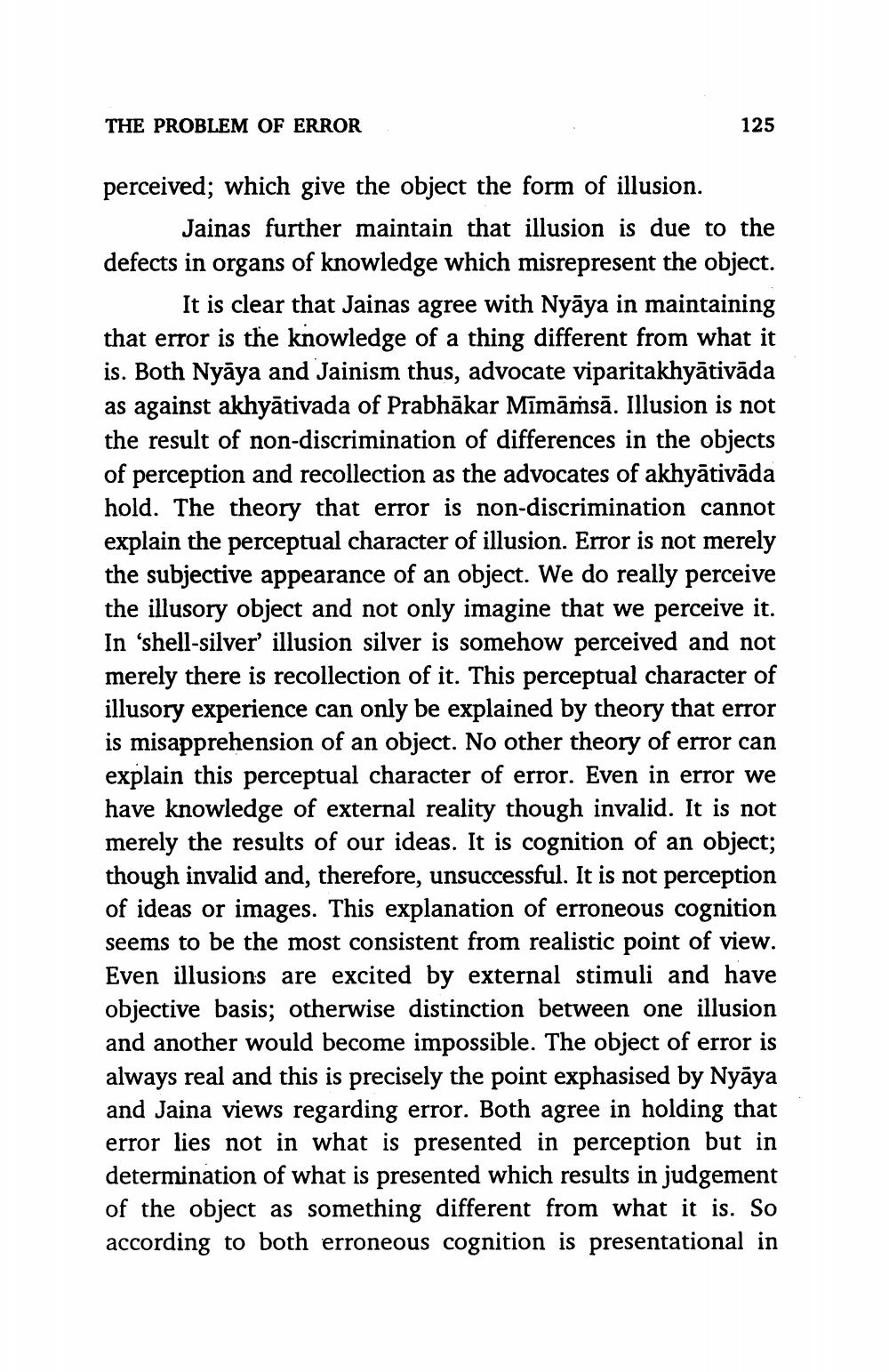________________
THE PROBLEM OF ERROR
125
perceived; which give the object the form of illusion.
Jainas further maintain that illusion is due to the defects in organs of knowledge which misrepresent the object.
It is clear that Jainas agree with Nyāya in maintaining that error is the knowledge of a thing different from what it is. Both Nyāya and Jainism thus, advocate viparitakhyātivāda as against akhyātivada of Prabhākar Mīmāṁsā. Illusion is not the result of non-discrimination of differences in the objects of perception and recollection as the advocates of akhyātivāda hold. The theory that error is non-discrimination cannot explain the perceptual character of illusion. Error is not merely the subjective appearance of an object. We do really perceive the illusory object and not only imagine that we perceive it. In 'shell-silver illusion silver is somehow perceived and not merely there is recollection of it. This perceptual character of illusory experience can only be explained by theory that error is misapprehension of an object. No other theory of error can explain this perceptual character of error. Even in error we have knowledge of external reality though invalid. It is not merely the results of our ideas. It is cognition of an object; though invalid and, therefore, unsuccessful. It is not perception of ideas or images. This explanation of erroneous cognition seems to be the most consistent from realistic point of view. Even illusions are excited by external stimuli and have objective basis; otherwise distinction between one illusion and another would become impossible. The object of error is always real and this is precisely the point exphasised by Nyāya and Jaina views regarding error. Both agree in holding that error lies not in what is presented in perception but in determination of what is presented which results in judgement of the object as something different from what it is. So according to both erroneous cognition is presentational in




